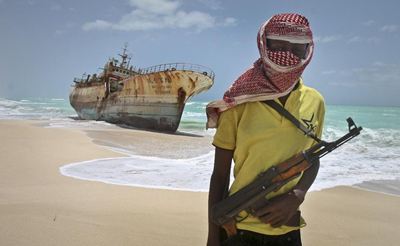
May 2013
Shipping industry giants have recently resumed meetings to discuss piracy and its threat to the global economy.
Participants included CMA CGM, MSC, Maersk Line and Hamburg Sud — together, these companies account for about 40 percent of world shipping by container volume. They discussed piracy trends in the Gulf of Aden, Indian Ocean and the Gulf of Guinea on the West Coast of Africa. Part of the purpose was to trade security intelligence, best practices and improve coordination between relevant parties.
The companies issued a joint-statement: “Although we have seen a decline in piracy activity over the past year, piracy continues to be a concern for the shipping industry, and therefore we still need our piracy consensus meetings where we can cooperate on responses to the threat to ensure the safety and security of our seafarers.”
The companies did admit that international cooperation has greatly reduced the risk, even if there is still more work to be done. They cited the international fleets in the Gulf of Aden in particular, as having a significant impact on the decreasing number of attacks. They also mentioned the emerging legal framework for prosecuting and detaining captured pirates as serving as a significant deterrent to those thinking of engaging in such activities.
“We highly appreciate the efforts by the international community to combat piracy in the Gulf of Aden and the Indian Ocean and the success achieved. The continued commitment by the international community with a strong presence and mandate is critical to sustain the current low level of piracy activity,” CMA CGM, MSC, Maersk Line and Hamburg Süd said.
The companies also put their heads together to refine some best practices for individual vessels to employ to avoid hijackings. Because these have been increasingly used, it has surely also contributed to the decline in attacks.
The group also issued a statement regarding these practices: “The Best Management Practice (BMP) has been a key contributor towards reducing the risks of piracy. To remain relevant, a revised BMP must focus further on the risk assessment element as the key methodology to determine appropriate anti-piracy measures. In our experience, a ‘one size fits all’ approach does not provide the most effective and efficient solution against the threat. Each protective element must be evaluated in response to the risk and the appropriate level and mix of security methods must be used.”
This group will play a continuing role in the global discussion about piracy.